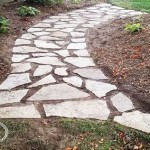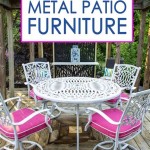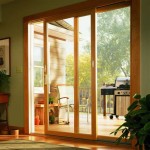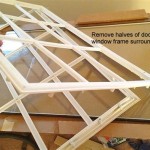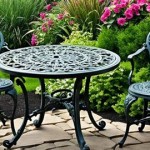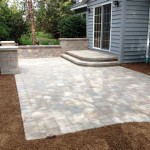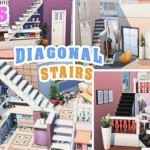Enhancing Outdoor Living Spaces: Yard Art, Patio Design, and Fireplace Integration
The creation of compelling outdoor living spaces is an endeavor that blends aesthetics, functionality, and comfort. Yard art, patio design, and the incorporation of fireplaces are essential elements in transforming a simple backyard into a captivating and inviting extension of the home. Careful consideration of each element, and the synergy between them, can significantly enhance the enjoyment and value of residential properties. This article will explore key aspects of yard art selection, patio design principles, and fireplace integration strategies, providing a comprehensive overview for homeowners seeking to optimize their outdoor environments.
Selecting and Positioning Yard Art
Yard art encompasses a wide range of decorative elements, from sculptures and fountains to wind chimes and planters. The selection of appropriate yard art requires a discerning eye and a clear understanding of the overall design aesthetic. The chosen pieces should complement the existing landscape architecture and reflect the homeowner's personal style. Considerations include the scale, material, color, and theme of the artwork.
Scale is a crucial factor. Overly large pieces can overwhelm a small yard, while diminutive items may become lost in a vast landscape. The size of the artwork should be proportional to the surrounding elements, such as trees, shrubs, and the house itself. In a compact garden, smaller sculptures or groupings of decorative stones might be more suitable. Larger properties can accommodate more substantial installations, such as life-sized sculptures or elaborate water features.
The material of the yard art should be durable and weather-resistant, capable of withstanding the elements without significant deterioration. Common materials include metal, stone, concrete, resin, and treated wood. Metal sculptures can add a modern or industrial touch, while stone and concrete offer a more natural and timeless aesthetic. Resin is a lightweight and affordable option, but it may not be as durable as other materials. The choice of material should also consider the climate of the region. In areas with harsh winters, materials that are susceptible to cracking or warping should be avoided.
Color plays a significant role in the visual impact of yard art. The colors should harmonize with the surrounding landscape and the home's exterior. Neutral tones, such as gray, beige, and brown, tend to blend seamlessly with natural elements. Bold colors, such as red, blue, and yellow, can create focal points and add visual interest. However, it is important to use bold colors sparingly to avoid creating a cluttered or overwhelming effect. The color should also be resistant to fading from sunlight.
The positioning of yard art is as important as the selection. The placement should be intentional and strategic, designed to draw the eye and enhance the overall composition of the landscape. Consider placing sculptures near pathways, creating a sense of discovery as visitors explore the garden. Fountains can be placed near patios or decks, providing a soothing and relaxing ambiance. Wind chimes can be hung near windows or doors, creating a gentle and melodic sound. The placement should also take into account the sunlight and shadows, ensuring that the artwork is properly illuminated throughout the day.
Principles of Patio Design
The patio serves as an outdoor extension of the home, providing a space for relaxation, entertainment, and dining. Effective patio design involves careful consideration of several factors, including size, shape, materials, and layout. The goal is to create a functional and aesthetically pleasing space that meets the specific needs of the homeowner.
The size of the patio should be proportionate to the size of the house and the yard. A patio that is too small will feel cramped and uncomfortable, while a patio that is too large will feel empty and uninviting. Consider the intended use of the patio when determining its size. A small patio may be sufficient for a couple, while a larger patio will be necessary for families or those who frequently entertain. The patio should also have adequate space for furniture, such as tables, chairs, and loungers.
The shape of the patio should complement the architectural style of the house and the surrounding landscape. Common shapes include rectangular, square, circular, and freeform. Rectangular and square patios are well-suited for modern and contemporary homes. Circular patios can add a touch of elegance and sophistication to traditional homes. Freeform patios can be used to create a more natural and organic look. The shape should also consider the flow of traffic and the placement of furniture.
The materials used for the patio should be durable, weather-resistant, and aesthetically pleasing. Common materials include concrete, brick, stone, tile, and composite decking. Concrete is a versatile and affordable option, but it can be plain and uninteresting. Brick is a classic and timeless choice, but it can be expensive to install. Stone is a natural and durable material that adds a touch of elegance to any patio. Tile is a versatile option that comes in a wide range of colors and styles. Composite decking is a low-maintenance and durable option that mimics the look of wood. The choice of material should also consider the climate of the region and the style of the house.
The layout of the patio should be functional and inviting. Consider creating distinct zones for different activities, such as dining, lounging, and cooking. The dining area should be located near the kitchen or grill, making it easy to transport food and drinks. The lounging area should be comfortable and relaxing, with plenty of seating and shade. The cooking area should be well-ventilated and equipped with the necessary appliances. The layout should also consider the flow of traffic and the placement of furniture, ensuring that the patio is easy to navigate and use.
Integrating Fireplaces into Outdoor Spaces
The integration of fireplaces into outdoor spaces elevates the ambiance, providing warmth, light, and a focal point for social gatherings. Outdoor fireplaces can take many forms, including traditional wood-burning fireplaces, gas fireplaces, and fire pits. The choice of fireplace should consider the size of the patio, the style of the house, and the homeowner's preferences.
Traditional wood-burning fireplaces offer a classic and rustic appeal. They require a chimney for proper ventilation and the storage of firewood. Wood-burning fireplaces can be constructed from brick, stone, or concrete. They provide a natural and authentic fire experience, but they also require more maintenance and attention than gas fireplaces. Wood-burning fireplaces are subject to local regulations regarding smoke emissions.
Gas fireplaces offer a convenient and clean-burning alternative to wood-burning fireplaces. They can be fueled by natural gas or propane. Gas fireplaces require a gas line and a vent for proper ventilation. They can be started and stopped with the push of a button, and they produce consistent heat. Gas fireplaces are available in a wide range of styles and sizes, making them a versatile option for any patio.
Fire pits are a more casual and informal option for adding warmth and ambiance to an outdoor space. They can be constructed from a variety of materials, including metal, stone, and concrete. Fire pits can be wood-burning or gas-fueled. They are typically smaller and less expensive than traditional fireplaces, making them a popular choice for smaller patios. Fire pits should be placed in a safe location, away from flammable materials. Local regulations regarding open fires should be consulted.
The placement of the fireplace is critical to its functionality and aesthetic appeal. The fireplace should be positioned to maximize its visual impact and provide warmth to the seating area. It should also be located away from flammable materials and in compliance with local building codes. Consider the wind direction when positioning the fireplace to minimize smoke and sparks. The fireplace can be integrated into the patio design by incorporating it into a retaining wall, a seating area, or a pergola. The fireplace can also be used to create a focal point in the landscape, drawing the eye and adding visual interest.
Regardless of the type of fireplace chosen, safety should be a primary consideration. Fireplaces should be installed by qualified professionals and inspected regularly. Fire extinguishers and fire blankets should be readily available. Children and pets should be supervised at all times when the fireplace is in use. Proper precautions should be taken to prevent fires and injuries.
Integrating yard art, thoughtful patio design, and a well-placed fireplace creates a cohesive outdoor living space. The overall aim is to create an inviting environment that enhances the homeowner's enjoyment of their property, while also increasing its value.

Made In America Yard Art Patio Fireplace Outdoor Fire Pit Seating Table Designs
Yard Art Patio Fireplace Fort Worth Outdoor Furniture In

Fire Pit Collections Yard Art Patio Fireplace

Yard Art Patio Fireplace Allen 26 Photos 111 S Central Expy Furniture Phone Number Yelp

Patio Furniture Seating Options Yard Art Fireplace

Patio Furniture Seating Options Yard Art Fireplace

Patio Furniture Seating Options Yard Art Fireplace

Yard Art Patio Fireplace Allen 26 Photos 111 S Central Expy Furniture Phone Number Yelp

Eoy Your Outdoor Room Yard Art Patio Fireplace Facebook Rooms

Eoy Your Outdoor Room Yard Art Patio Fireplace Facebook Rooms Furniture Sets
Related Posts

